Catocala obscura
Catocala obscura
kah-TOCK-uh-lahmobs-SKEWR-uh
Strecker, 1873
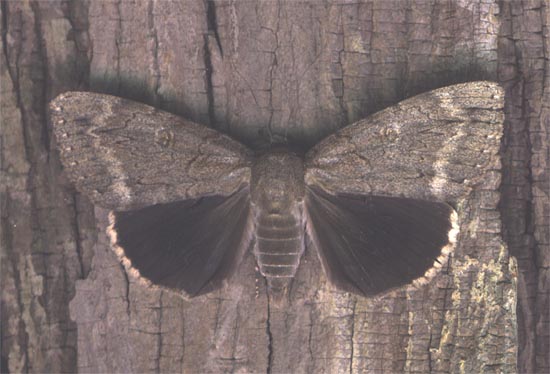
Catocala obscura, posed scan on shagbark hickory by Bill Oehlke,
Pottersville, New Jersey, August 18, 2002.
This site has been created by
Bill Oehlke at oehlkew@islandtelecom.com
Comments, suggestions and/or additional information are welcomed by Bill.
| TAXONOMY:
Superfamily: Noctuoidea
Family: Noctuidae
Group: Noctuinina
Subfamily: Catocalinae
Genus: Catocala, Schrank, 1802
| |
MIDI MUSIC
"Moon River"
copyright C. Odenkirk
MIDI CITYON.OFF
<bgsound src="moon.mid" LOOP=FOREVER>
|
DISTRIBUTION:
Catocala obscura, The Obscure
Underwing, (wingspan: 60-72mm), flies in Canada in southern
Quebec
(very rare) and Ontario and in the United States from
Massachusetts
and Connecticut
south to
North Carolina, west to
Mississippi and north to
Iowa,
Illinois,
Ohio and
Michigan.
It has also been reported in
Alabama,
Arkansas,
Georgia,
Indiana,
Kansas,
Kentucky,
Minnesota,
Missouri,
New Hampshire,
New Jersey,
New York,
Pennsylvania,
Tennessee,
Virginia,
West Virginia and
Wisconsin.
Obscura has lightly checked white fringe (residua - grey fringe) and
tends to be less common in northern portions of its range. The
dull, grey forewings, usually void of any significant dashes or
streaks, provide for easy identification. The antemedial,
postmedial and subterminal lines of obscura are faint and the outer half of the subterminal
region is only slightly paler than the rest of the forewing.
The upper tooth of the pm line is slightly elongate with tips of subsequent teeth in an oblique line.
The reniform spot is mostly concolorous with the rest of the forewing, sometimes with some darker marks.
The subreniform spot is open, faintly outlined and concolorous with the rest of the wing.
Catocala obscura (right), Windsor, Ontario, courtesy of Maurice Bottos. See
wing descriptions. |
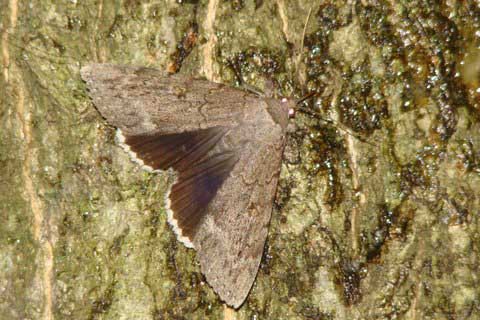
|
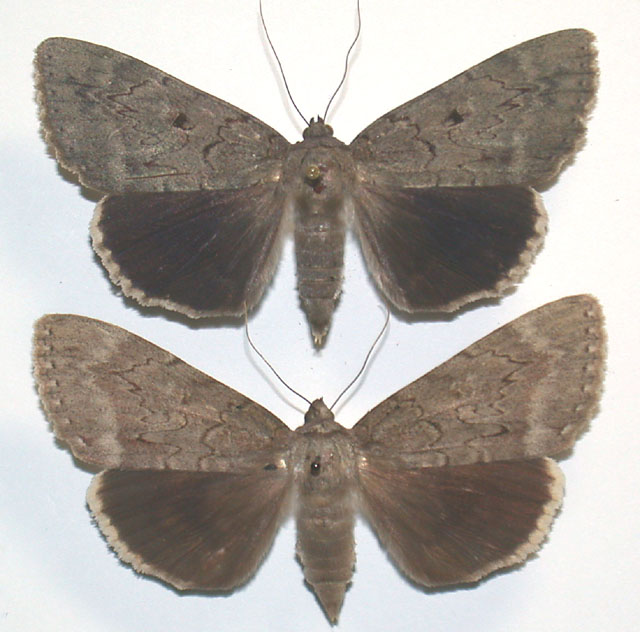
Catocala obscura pair, August 16, 2003, Longueuil, Quebec,
taken at bait, courtesy of Pierre Legault.
FLIGHT TIMES AND PREFERRED FOOD PLANTS:
Catocala obscura are on the wing from July to October. Peak
flight is probably in August-September in the northern portions of
range.
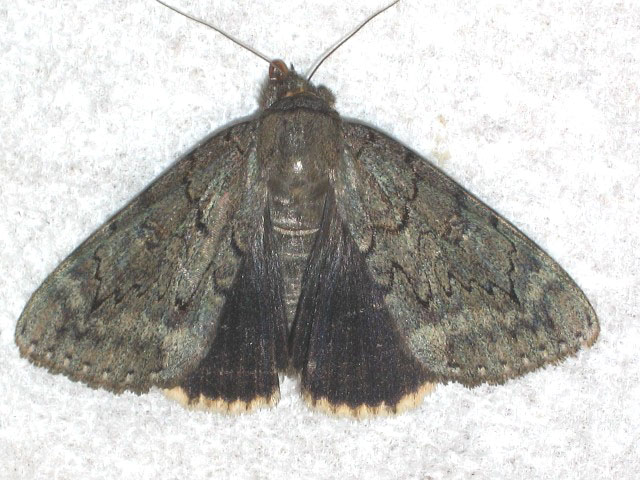
Catocala obscura, Sussex County,
New Jersey, August 1, 2006, courtesy of Joe Garris
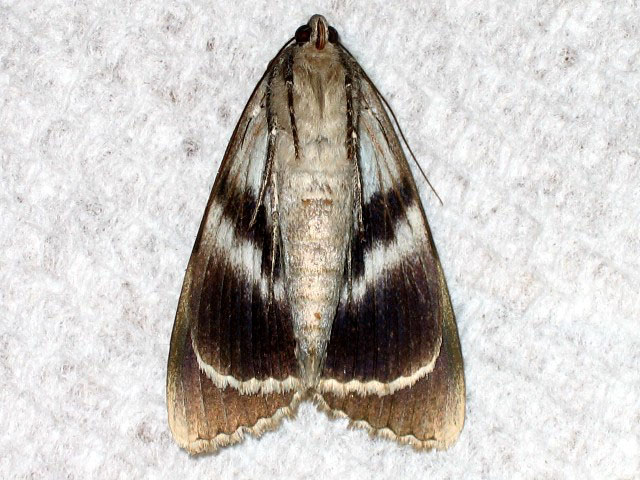
Catocala obscura (verso), Sussex County,
New Jersey, courtesy of Joe Garris
The Catocala obscura caterpillar feeds on Juglans and
Carya species:
pecan and hickories. Sometimes moths hide, head down, under shags
on shagbark hickory.
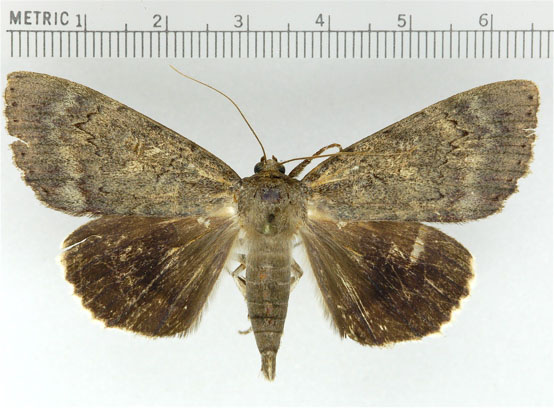
Catocala obscura, Myersville, Frederick County, Maryland, September 5, 2002, MVlight,
Mark Etheridge.
ECLOSION:
Adults eclose from pupae at soil surface.
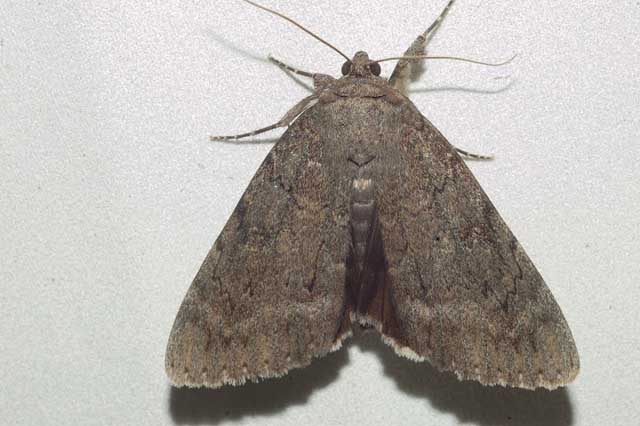
Catocala obscura, Ithaca, Tompkins County, New York,
August 8, 2012, courtesy of Meena Haribal.
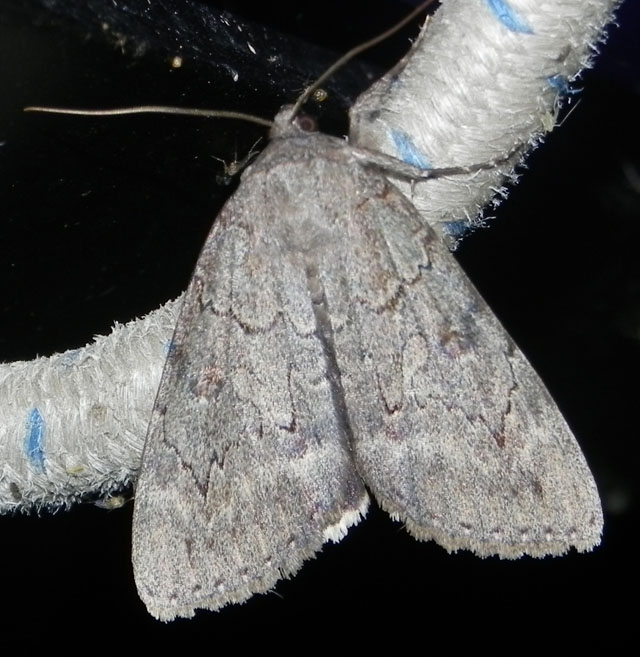
Catocala obscura, Ware, Hampshire County, Massachusetts,
August 31, 2014, courtesy of Brian Klassanos, tentative id by Bill Oehlke
SCENTING AND MATING:
Catocala obscura females
emit an airbourne pheromone and males use their antennae to track the
scent plume.
EGGS, CATERPILLARS, COCOONS, AND PUPAE:
Eggs are deposited on
tree bark in the fall and hatch the following spring.
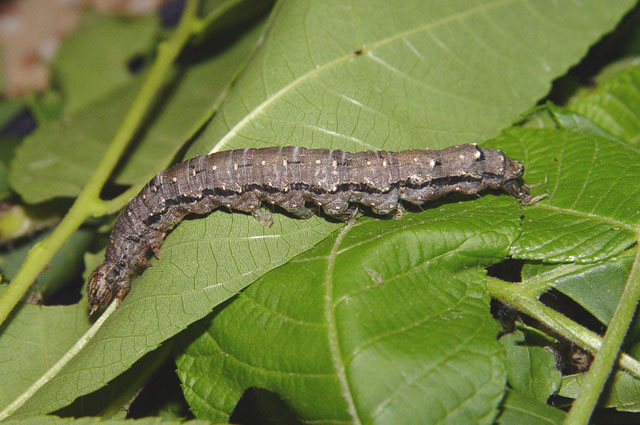
Catocala obscura, reared by Gabe Larrabee, photo by Ronald Nelson
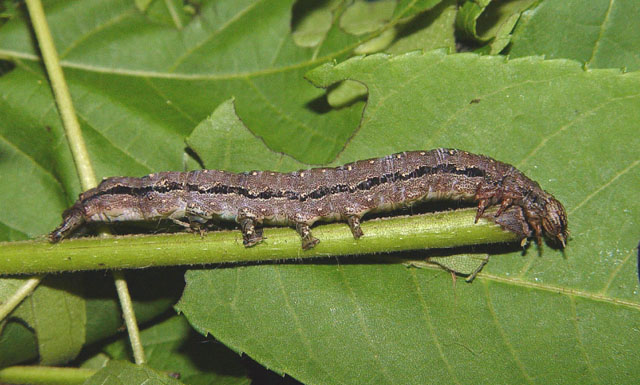
Catocala obscura, reared by Gabe Larrabee, photo by Ronald Nelson
Larval Food Plants
Listed below are primary food plant(s) and alternate food plants. It is hoped that this alphabetical listing followed by the common
name of the foodplant will prove useful. The list is not exhaustive, although some species seem very host specific.
Experimenting with closely related foodplants is worthwhile.
Carya glabra
Carya illinoinensis.......
Carya ovata
Juglans nigra
| Pignut hickory
Pecan
Shagbark hickory
Black walnut
|
This page is brought to you by Bill Oehlke and the
WLSS. Pages are on space rented from Bizland. If you would like to become a "Patron of the Sphingidae/Catocala Sites",
contact Bill.
Please send sightings/images to Bill. I will do my best to respond to requests for identification help.
Enjoy one of nature's wonderments: Live Saturniidae (Giant Silkmoth) cocoons.

|

To show appreciation for this site, click on the flashing
butterfly to the left, a link
to many worldwide insect sites. |











